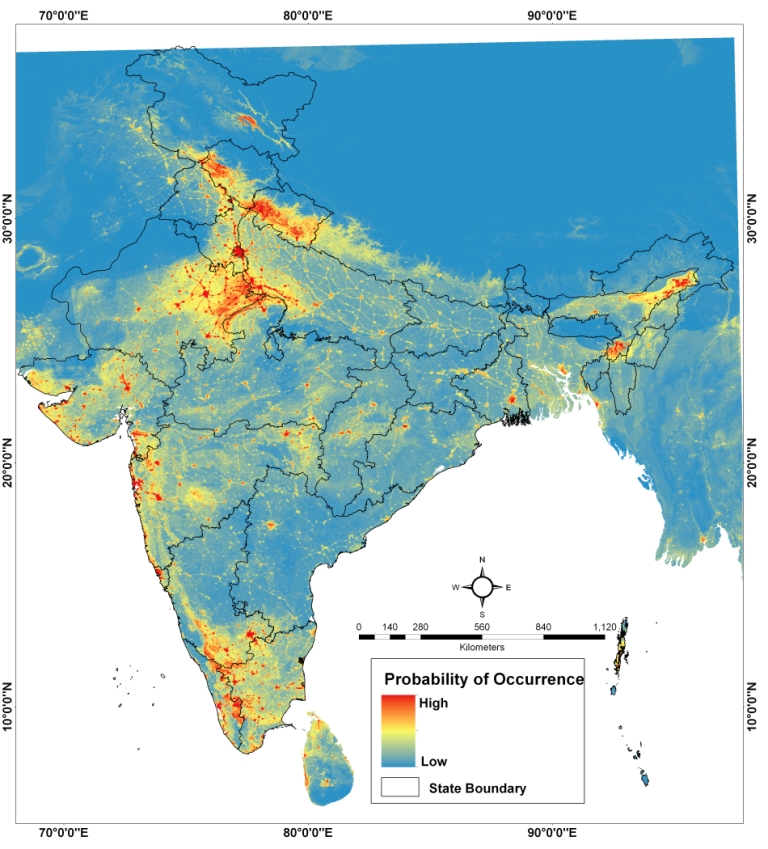Kerala completes Asia’s largest Citizen Science Bird Survey
Conducted over 600 days across five years, the field surveys for the Kerala Bird Atlas (https://birdcount.in/kerala-bird-atlas/) closed on the 13th of September. What the Kerala Atlas team has achieved is, arguably, the largest citizen science bird project in the Asian continent, systematically surveying 10% of an Indian state with an area of 38,863 sq. km. In all, 4,000 locations were surveyed in each of two seasons, by a force of over 1,000 birdwatchers.

When the Kerala bird fraternity met in 2015 and decided to start a bird atlas, nobody knew what kind of commitment each one of the volunteers was getting into – personally, professionally, physically, and mentally. Many continued from start to finish, others joined in, performed a cameo, and passed on. The team covered over 95% of identified locations in the dry season (January-March). In the wet season (July-September) however, multiple floods over the years, and now COVID, restricted coverage to just over 80% of locations. While analysis is underway towards generating new insights and knowledge from the data continues, Kerala Bird Atlas team can be proud that their efforts will forever shine as a glorious jewel in the crown of Indian ornithology.
Kerala Bird Atlas is an ambitious citizen science project to map the distribution and abundance of birds of an entire Indian state. Envisaged as a five year activity starting 2015, the Bird Atlas will yield detailed insights into the abundance and distribution of the common birds which is largely lacking now. By repeating the process over a period of 10 years or so, it will be possible to scientifically document changes in distribution and abundance of our birds over a period of time. This has huge implications for nature conservation as a whole as birds are indicators of changing ecological conditions.
Quotes
“Thanks to the large network of birdwatchers in Kerala, we were able to cover a landscape with thick forests, vast wetlands, croplands and villages. Every district had a dedicated team of birdwatcher networks who executed the surveys efficiently.”
Praveen J, one of the state coordinators of this project.
“Bird atlases of similar kind have been done in western countries. However, to execute such a project in a mountainous, tropical state with some of the most impenetrable forests in the world is a commendable job. Thanks to the ever-supportive Kerala Forest Department – its leaders as well as staff of ground – such an execution was possible.”
P.O.Nameer, Special Officer, Academy of Climate Change Education and Research, Kerala Agricultural University, Vellanikkara
“A systematic, equal-effort survey like the Kerala Bird Atlas gives high quality and fine-scale information on the distribution of birds, to understand how they are related to habitat and climate. Repeated over decades, the Atlas will provide unprecedented understanding of changes in bird populations. A unique aspect here is that all the data are freely available for use by others for research and conservation.”
Suhel Quader a the Scientist Nature Conservation Foundation which is a part of Bird Count India.
FAQ
How were the atlas locations selected?
Kerala was first divided into many cells of size 6.6 x 6.6 km. Each cell was divided into four quadrants of size 3.3 x 3.3 km. Each quadrant was divided into nine 1.1 x 1.1 km sub-cell. Among the nine subcells in each quadrant – one subcell was randomly selected. Hence, each cell has four sub-cells.
Who lead the atlas bird surveys?
Every district had a team lead by one or two senior bird-watchers. They conducted meetings and planned the coverage of subcells in their respective districts and kept in touch through Whatsapp groups. Some districts sub-divided themselves into clusters and each cluster was owned by a few bird-watchers. Forest surveys were planned by district leaders inviting birdwatchers from all parts of the state and sometimes from Tamil Nadu, Karnataka and Maharashtra.
Which groups and organisations were involved in the survey?
Alappuzha Nature History Society (ANHS), Bird Count India (BCI), Birders Ezhupunna, Birdwatchers of Kerala, Chilla Nature Club (CNC), Cochin Natural History Society (CNHS), Hume’s CEntre for Ecology and Wildlife Biology (HCEWB), Idukki Natural History Society (INHS), Kasaragode Birders, KeralaBirder, Kidoor Birders, Kole Birders Collective, Kollam Birding Batallion, Kottayam Nature Society (KNS), Malabar Natural History Society (MNHS), Malappuram Birders, Nature Conservation Foundation (NCF), Natural History Society of Palakkad (NHSP), Pathanamthitta Birders, Sálim Ali Centre for Ornithology and Natural History (SACON), Tropical Institute of Ecological Sciences (TIES), World Wide Fund for Nature (WWF), and Young Birders Club, Palakkad.
What was the role of Kerala Forest Department in Kerala Bird Atlas?
PCCF (Wildlife) and the Chief Wildlife Warden, Kerala State Forest Department, accorded sanction for the bird surveys in protected areas and reserve forests for the atlas. Forest department supported these surveys, which were mostly run for four days, in accessing interior locations and arranged stay and services of forest staff. In some non-forests regions, the Social Forestry wing of the Forest department helped volunteers to reach far-off places where no other volunteers lived.
What technology was used to do atlasing?
The Kerala map was gridded into cells using GIS scripts to produce a KML file. Random numbers were generated from www.random.org. A webpage about the atlas protocol was hosted at www.birdcount.in. A dashboard using javascript showing the subcell locations was created in GitHub for every district. Atlas volunteers used the eBird App to record bird sightings and Locus Free App to find the location of the subcell while in the field. Route maps for difficult locations were created using QGIS. Atlas survey status was updated in Google Spreadsheets by linking the respective eBird lists and reflected in the dashboard instantaneously. R Scripts were used to analyze the downloaded data from www.ebird.org and create atlas maps. Atlas reports were generated using Scribus.
When will the report be released?
District atlases of Alappuzha, Thrissur and Kannur have already been formally released. Draft reports of Kottayam, Kozhikode and Kasaragod have been submitted to the Kerala Forest Department. We expect a first state-wide report to be completed by the end of 2020 and a detailed analysis to follow in the first half of 2021.
What do you expect as results from the Kerala Bird Atlas bird surveys?
The report will have the following.
- The current distribution of ~150 widespread and abundant birds of Kerala
- Consolidated distribution of bird communities in Kerala (e.g. waterbirds)
- Predicted distribution of the bird communities in the next 25 years under different climate and land-use change scenarios.
- Predicted distribution of certain key species in these declining and increasing bird communities in the next 25 years.
- Hotspots for endemic and threatened bird diversity
- Identification of key focus areas outside the Protected Area network for conservation action.
Appendix: Useful Websites & News links
https://birdcount.in/kerala-bird-atlas/ [Home page of Kerala Bird Atlas]
https://birdcountindia.shinyapps.io/Kerala_print/ [Draft maps of Kerala Bird Atlas]
Previous Press Releases
https://factordaily.com/kerala-bird-atlas/
Slides & Talk
`
For More Information
Dr. P O Nameer, Special Officer, Academy of Climate Change Education and Research, Kerala Agricultural University, Vellanikkara, KAU P.O., Thrissur Kerala 680656. Email: nameer(dot)po(at)kau(dot)in.
Praveen J, Bird Count India. Email: paintedstork(at)gmail(dot)com
District Information
Vishnupriyan Kartha, Cochin Natural History Society. [Ernakulam District]
E S Praveen, Kole Birders Collective. [Thrissur District]
Praveen V, Natural History Society of Palakkad. [Palakkad District]
Dr. Jishnu R, Kollam Birding Battalion. [Kollam District]
Hari Mavelikkara, Pathanamthitta Birders. [Pathanamthitta District]




